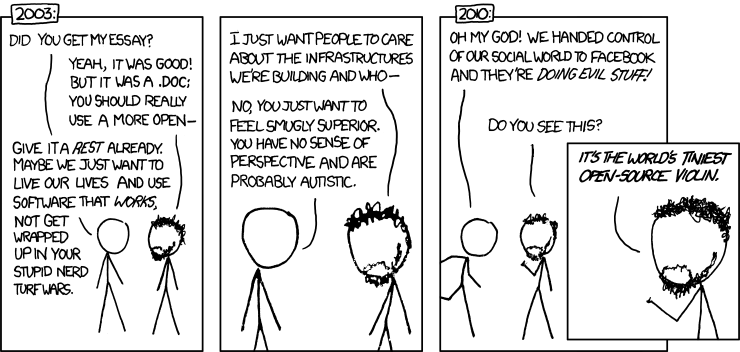I’m increasingly seeing the management and architecture disciplines as being in a race to control organisations. Both groups show behaviours that suggest they are trying to extend their own discipline to encompass more of the organisation. Equally, both groups work hard to exclude areas they are not comfortable with from their responsibilities. Architects want to control the organisation by controlling knowledge of the structure and value streams at all levels, while avoiding execution issues. The management profession wants to control the organisation by controlling resources, while avoiding responsibility for technical issues.
Both the architecture and the management professions reveal their desires to control the organisation by the manner in which they grow the scope of their approach through ever increasing extensions of their disciplines. The management discipline has grown from supervision, to general management, to strategic management, to change management, and to all of the business unit focused sub-disciplines that form the structure of a management degree (finance, HR, etc). Conversely, architecture has grown from a technical discipline to include information architecture, solution architecture, business architecture, and information architecture.
Christopher Alexander popularised – if his ideas can be considered popular – the idea of generative sequences. In essence, a generative sequence is the process of taking a structure and changing it through a series of structure preserving transformations. After each transformation the whole structure is then evaluated to determine if the transformation has – more or less subjectively – improved the structure. This process is repeated. Alexander also defines the so-called structure preserving transformations that are applicable at each step.
This is an interesting analogy to decision making in organisations. Each time a decision is made the structure of the organisation changes. Structure in this case may refer to anything: including the attitude of an individual team-member, the next task to focus on, or even quite literally a change in the organisation’s structure as we usually use that term.
What is interesting is that from both the manager’s point of view and the architect’s point of view the details of that structural transformation are only selectively considered. Because managers are generally outcome focused, each transformation or decision is evaluated based on its perceived contribution to outcomes. These outcomes may be long or short-term, or they might be project-focused, or they might relate to the entire organisation – but it’s the outcome that’s important.
While management is primarily concerned with outcomes, the architect is concerned with structure as a whole. When decisions are made they not only impact the progress towards goals but they may also potentially impact other structural elements of the organisation. Rather than a distinction between long or short-term time horizons, or between technical and business domains, the distinction between architecting and managing is generally about outcomes versus structure.
Currently, it’s difficult for architects to evaluate the impact of a transformation in terms of the progress towards desired outcomes because a comprehensive view of the desired outcomes is rarely shared, documented, or linked to the structural elements as defined by the architect. Similarly, it is difficult for a manager to utilise the models created by the architect to make decisions because the models which describe the structure use technical language and contain much that is irrelevant to decision making.
This battle is not yet won, of course. To be a successful architect you must manage carefully, and to be a successful manager you most certainly need to be an architect of sorts. The MWT Model is driven from the theory that this battle will and is ultimately changing the practice of management itself. This may be seen as victory going to the architects but is more likely to mean that successful architects will no longer be able to choose what issues they avoid.
While this might be interesting to professionals on both sides of the battle I’m just as interested in how important this is to the organisations that we work in. As I’ve said before, I believe good IT is structural – when you implement an HR system that enables you to re-deploy some employees in the HR branch of the org chart, you should really hang that HR capability embedded in the IT system in their place.
As these structural IT changes are increasingly differentiating organisations and brokering their relationships with customers it is ever more important that organisations can effectively operate and enhance these technology-enabled capabilities. Both managers and architects currently struggle to achieve this and in the organisation of the future (now?) it’s really the only game.



 “
“